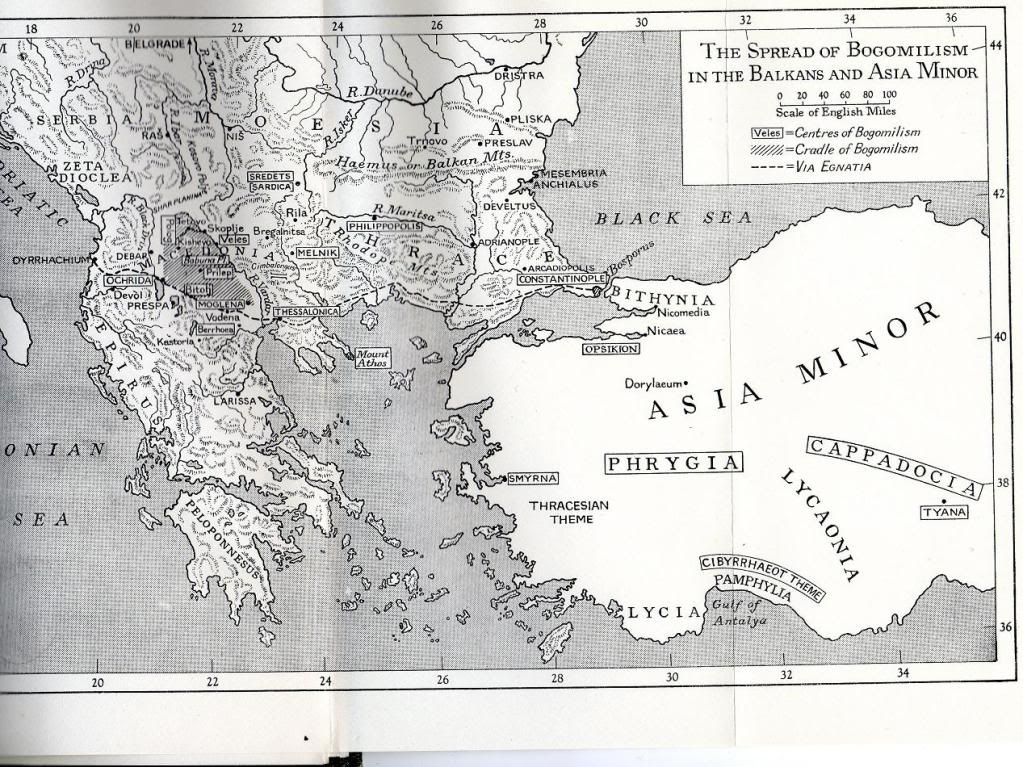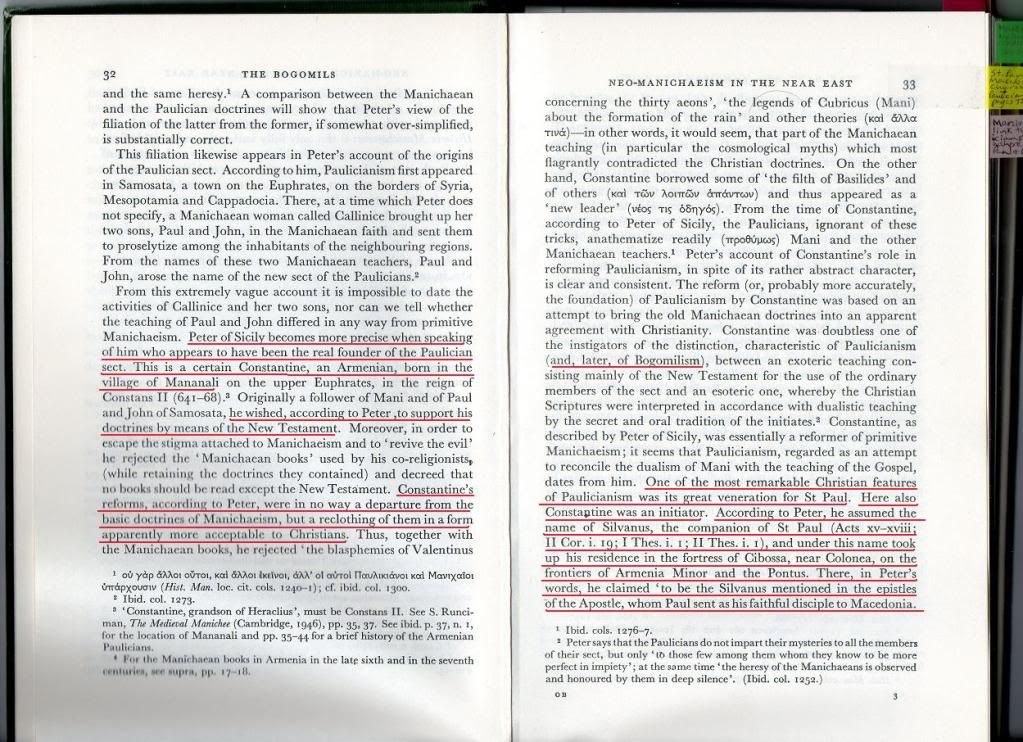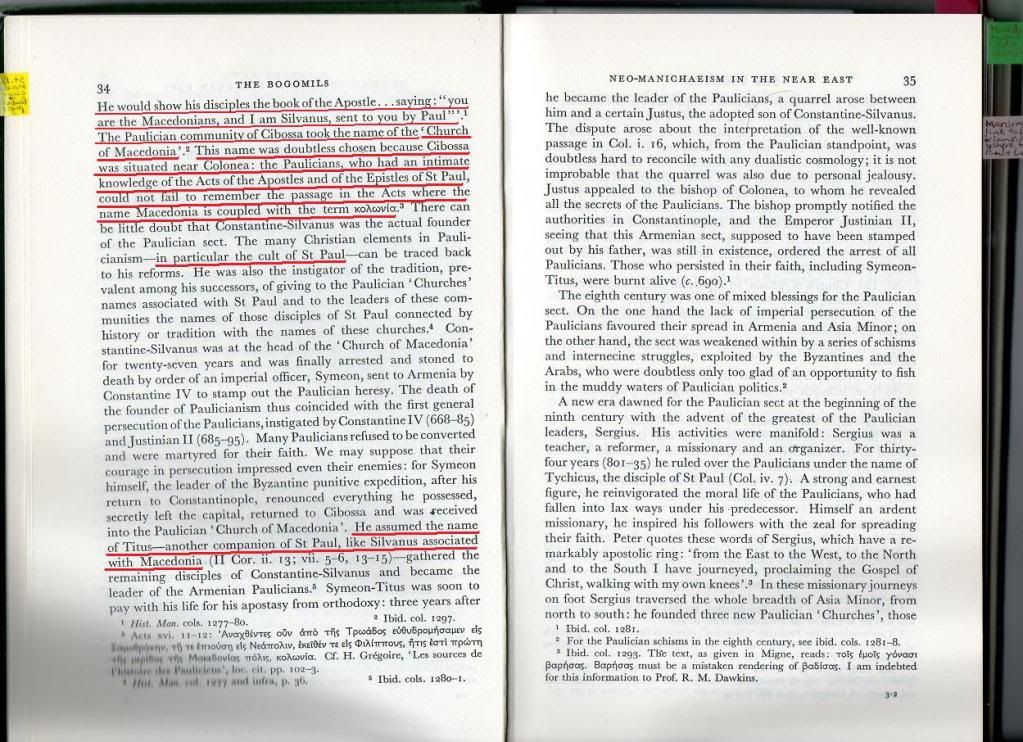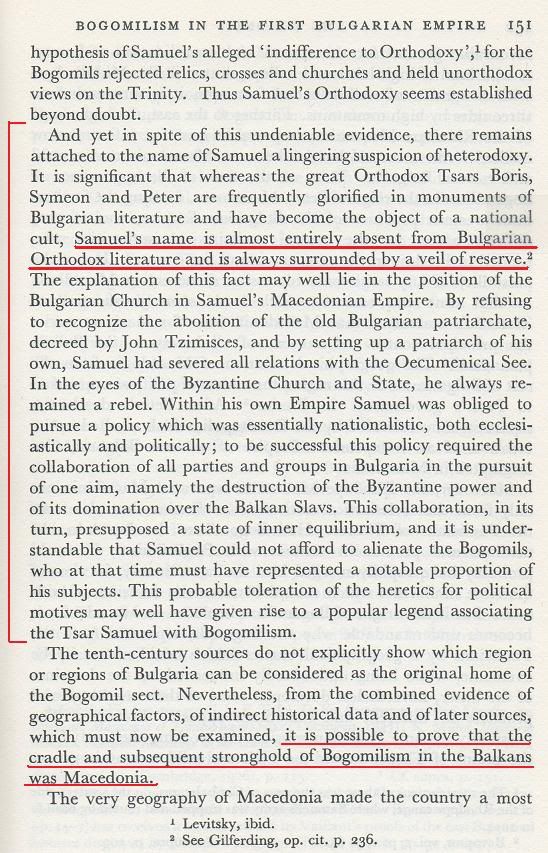

Bogomilism was indirectly influenced by Manichaeism (info on Manichaeism can be found here - http://www-bcf.usc.edu/~sbriggs/Brit...anichaeism.htm) and directly influenced by Paulicianism (http://www.carthage.lib.il.us/commun...aulicians.html) and other sects such as the Massalians (or Messalians) and the Marcionians. The following pages are from Dmitry Obolensky's book 'The Bogomils' which demonstrate cultural intersecting of influence from the ancient Christian Macedonians to the Paulicians to the other sects forwarded to the Bogomils.



Obolensky thoroughly demonstrates that Bogomilism was centered in and originated from Macedonia (but not exclusive to) and even called Macedonia the "cradle of Bogomilism" as well as state the following;

More to come.






Comment